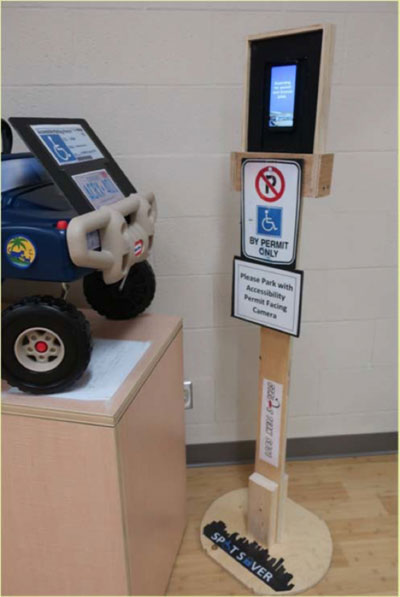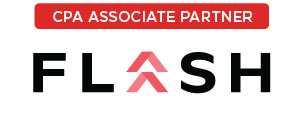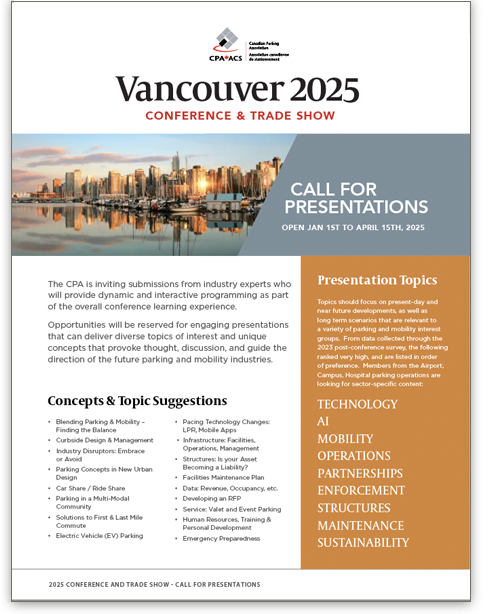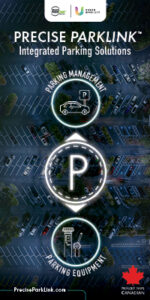Eyad Abu Rish | The Tom Arnold Scholarship in Parking Industry Advancement at York University
 Engineering can impact the face of the parking industry and reshape our parking experience, especially with autonomous vehicles becoming a norm in the close future. With this technology rising, we can create more parking spaces and automate the process.
Engineering can impact the face of the parking industry and reshape our parking experience, especially with autonomous vehicles becoming a norm in the close future. With this technology rising, we can create more parking spaces and automate the process.
There are various ways engineering is changing the industry, as quoted by York university’s transportation-engineering professor Kevin Gingerich: “Many jurisdictions are beginning to question the need for minimum parking requirements as dense cities become increasingly multimodal and shift away from the traditional automotive emphasis. Autonomous vehicles and transportation network companies (TNC) such as Lyft and Uber will lead to further changes in this demand and require transportation professionals to rethink our current parking policies and solutions”. I will be focusing on autonomous vehicles in this article as the latter is self-explanatory.
Imagine you are arriving late to the mall just before the holidays as you are picking up a gift, 20 mins before closing time. Soon, you will be able to instruct your car to find a parking space and get off shopping. Meanwhile, your car would communicate with the parking structure to find an empty parking spot; in response, your car will park in the spot and notify you of the location code.
Here in Toronto, parking can be very limited. Some studies, such as the ones done at the University of Toronto, have proposed a grid like system for parking where cars would park in a congested-matrix form. This means that cars can be placed in front and beside each other without any spaces. This would be limited to only autonomous vehicles, which would be able to communicate with one another and thus make room for…
By Eric Borromeo
Ctrl-Z Team 5831 is a FIRST LEGO League (FLL) robotics team from Bayview Glen School in Toronto. FLL is a STEM programme with over 38,000 teams from 100 countries competing across three aspects: innovative solution, autonomous robot and core values.
For the 2019-2020 FLL season, teams were challenged to identify a problem related to buildings or public places in the community and create an innovative solution for such problem. Prior years’ themes have related to space travel, waste management, climate change, food safety and other pertinent topics.
Ctrl-Z’s Project
The problem we are addressing is accessibility. People without accessible parking permits are using designated spots illegally and blocking access to those who require them. This prevents people with disabilities and many seniors from leaving their homes, leading to isolation and immobility. We need a way to ensure accessible parking is available to those who need it.
Ctrl‐Z’s Solution
Our solution, the SPOT SAVER, will ensure access to parking that will lead to greater levels of physical activity and interaction with others, resulting in improved mental health and longevity.

Prototype: The vehicle displaying the permits is the Lego component.

Preliminary Sketch of Prototype
How It Works
The SPOT SAVER consists of an optical character recognition system designed to ensure that special needs persons and seniors can have much needed access to accessible parking spaces in various community spaces across the city.
There are two main parts: a camera located on the top of a pole in front of the accessible parking spot which detects the presence of an accessible parking permit on the dash of a parked car. If detected, a message saying, “Valid permit detected” with a green light will appear on a display screen below…
By Michael Back
Contactless infrastructure has been in place for years but until now, consumers have not embraced this technology on a broad scale. As a result, parking operations have offered it inconsistently across the board. The tides are changing – but will it be a tsunami?
The climate around coronavirus has drawn particularly close attention to the cleanliness and safety associated with both cash and the high-touch payment technology that we use every day — from ATMs to retail pin pads to parking infrastructure. The new consumer hypersensitivity around previously simple conveniences of modern-day life will need to be re-examined post COVID-19.
Let’s start by considering just how unhygienic — and as a direct result — unsafe cash and high-touch payment technology happens to be:
We have known for years that banknotes harbour the perfect environment for microbes to settle. Past studies have shown that bills carry more than 3,000 types of bacteria including E. coli, Salmonella, and Staphylococcus aureus. But as the world comes together to stop the spread of COVID-19, what’s new is that governments are starting to undertake strong measures to alleviate coronavirus transmission via cash handling — China is disinfecting and locking away used banknotes, while the Bank of Korea is heating banknotes, and in some cases, burning the bills. In addition, the Bank of Korea will no longer handle the exchange of coins and banknotes that have been introduced from abroad.
Another powerful recommendation in the move away from cash comes from the World Health Organization, which has urged the population to avoid cash and to use contactless payments to reduce the risk of transmission of COVID-19. In an April 2020 study, The Lancet Microbe looked at how long the coronavirus lasts on various surfaces. Among their discoveries was that the…
By Marc-Antoine Ducas
Moving to and from the office can be a challenge for a lot of employees and it can be a headache for employers. Actual mobility solutions are not always optimal and some employees have to use their car. When office parking is saturated, companies have to offer better commuting options or face the prospect that valued employees will look at other job opportunities that make their life easier.
The solution is to encourage employee carpooling and there are numerous strategies that many companies already use to great effect. All successful employee carpooling programs have one element in common – make carpooling as easy and convenient as possible to position it as a viable alternative to commuting in a single-occupancy vehicle.
When coordinating carpools for large groups, obstacles such as differing work schedules, unpredictable weather and accounting for last-minute changes are inevitable, but the overall benefits do outweigh the challenges. As 100% of carpooling drivers have to park when they get to their destination, we realize that parking is the key incentive to change their behaviour. Travel time and use of high occupancy vehicle (HOV) lanes also interest people in carpooling.
Netlift works with companies to determine needs and constraints in relation to employee mobility. Our goal is to provide a sustainable mobility solution while optimizing parking facility usage.
Employees install the Netlift app and enter their commute route. Parking access, ride payment, employee contributions and reimbursements to drivers are all handled through the app, taking the hassle out of commuting and making the most of current parking facilities.
But when an organization runs out of parking spots then that means building new parking lots or hiring shuttle services, an important cost. Netlift’s ongoing objective is to optimize available parking by putting more people per car.
By Matt Jobin
The Coronavirus crisis has thrown our lives into chaos, and it’s changing the way that we, as parking professionals, think about parking.
The public health crisis will eventually pass, but even as it does, it will be important that cities, private parking owners, and organizations with parking assets work with their parking consultants learn from this crisis. This pandemic provides a stark reminder that people are susceptible to illness, and we should strive to find ways to minimize the risk.
As a parking facility designer, I’ve always considered safety to be one of the most important design elements. Until recently, though, these types of healthcare issues weren’t part of the equation. But as the Coronavirus crisis has shown, it should be. The parking process exposes people to many common “touch-points”, forcing drivers to touch surfaces that others (often many others) have already touched. This is how illness spreads, and as we are learning during this pandemic, viruses can live for several days on surfaces. This is an important issue, not just now, but in normal times too. We are constantly coming into contact with flu and cold viruses, as well as many types of bacteria. As such, cities and parking owners and their design teams need to be aware of where potential risks exist within parkades and how to mitigate them.
So, the question is, how can we reduce the risk of viruses being introduced to high-use surfaces within parkades?
Start with Technology
Technology can play an important role. There are a number of technologies already in use that can reduce touch-points. Perhaps the most common, and useful, are frictionless parking suites that use LPR to recognize a vehicle as it enters and exits, and automatically bills the driver’s credit card or associates the parking episode with a permit. These suites…
By David Burr
“Nobody goes there anymore; it’s too crowded.” – Yogi Berra
The traditional behavior of automobile drivers heading into the city center and finding parking has led to an untenable level of traffic and congestion in many cities. Urban roadways are at or beyond capacity and, as cities become denser and populations increase, this problem will only get worse. Anyone who has driven in a dense urban environment is aware of this, yet still they come, despite knowing the headaches and the hassles of driving and parking in these urban areas. The solution, of course, is not fewer people, but fewer vehicles.
To achieve this decreased use of individual cars within city centers, cities need to ask themselves what motivates drivers to continue this behavior, and then tailor alternative transportation solutions that accommodate these needs when possible. By developing programs and policies that encourage pedestrianism and the use of alternative transportation, as well as accommodating bicycle and scooter traffic as supplementary forms of transit, cities can begin to get closer to reducing urban vehicle traffic while not impairing use and access, but rather enhancing it.
A natural consequence of striving for this solution is that transportation, particularly as people move in and out of metropolitan corridors on daily commutes, is becoming more intermodal. In order to operate efficiently and accommodate the needs of people traveling into and around dense urban areas, and back out to less dense suburban areas, transportation systems also need to offer options and fully leverage the various forms of existing infrastructure and high density transit options available to them.
To drive adoption and increase the use of these various forms of transport, it is important to understand them functioning not individually, but rather as separate links in a greater transportation “chain”. A chain…
City of Halifax Councillors are eager to learn what other jurisdictions are doing relative to curbside management and parking practices during this unprecedented period of time. If you are developing a plan, or have one already in, please would you be willing to share your experiences?
Posted by: Victoria Horne, City of Halifax
Date: March 31, 2020
This past week, the Canadian Parking Association has been actively monitoring the developments of the Government of Canada’s advice, recommendations and mandated restrictions the country is facing as the COVID-19 virus epidemic spreads. We urge the parking community in Canada to adhere to the health and safety recommendations that are in place and being updated daily.
The CPA is taking measures to provide as much support to our members as possible in these unprecedented times. For the time being, CPA staff are working remotely, adhering to the social distancing requirements, but are available by email and telephone to address your issues. We urge members to reach out to the CPA staff members and other members of the parking community to share information, good practices and questions about how they are managing during this time. https://canadianparking.ca/interchange/ is the link to use to post your questions and comments for all to view and respond. In the coming weeks, we will be offering video chat sessions to augment traffic on the Interchange site.
Conference planning is ongoing, as it is early still to make a major decision to cancel our October dates. To that end, staff will continue to organize the various aspects of the event with the understanding that there may be a requirement to cancel or reconfigure the event based on how the pandemic and recovery progresses. Communications will be sent as information changes, and you are encouraged to visit the CPA website often to watch for updates. Exhibitors and attendees can rest assured that should the event be cancelled due to this crisis, any fees paid will be fully refunded. Our hotel partner, Bonaventure Hotel Montreal, and other contractors have been very cooperative in working with us to minimize the impact that may transpire as we evaluate our position going…












